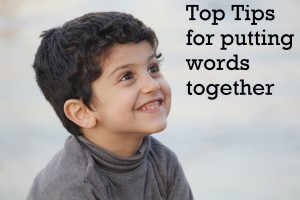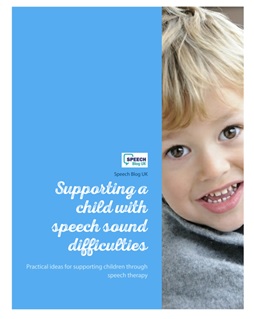A while ago I wrote about encouraging children who aren’t using language at all to start using words. You can read that post here. But what about helping them to move on to the next stage – moving on from single words to putting phrases and sentences together?
When children have around 50 single words which they are using fairly consistently they usually begin to link them together to make their own unique phrases. They may use these to indicate that they want something repeated (eg “more cake”!), or to indicate what they want to happen (eg “Mummy up” to ask to be lifted up). They may even start to use some describing words to talk about what they see (eg “red car” or “big teddy”). At this stage it’s particularly helpful if a child knows some verbs (action words) as these really help to put sentences together. Here are some ideas to help your child to put words together, but especially to help them to learn verbs:-
- I said this before, but it’s really important, so I’m going to say it again – don’t ask too many questions. Asking questions all the time can make your child feel under pressure and frustrated. Instead , repeat back what your child says and add one more word to it. For example, if your child says “teddy” you might say “yes, teddy sleeping”. In this way you’re showing them how to put their words together to make word combinations that interest them.
- Mealtimes can be a great time to encourage language – most children (and most adults!) are motivated by food. This is a great time, when your child says “more” to show them how to add to that to say exactly what they want. For example, you could say “oh you want more banana“
- Look at books and family photos with your child and talk about what people are doing. For example, you might say “look, mummy’s walking”. Also, ask your child to find particular things in the pictures to check their understanding of the words. For example, you could say, “can you find daddy eating?”.
- Play games asking your child to do different actions. Start with single words and see if they can do what you say (for example, “can you run?” “can you clap?” etc). Doing the actions will help your child to remember the words – we all learn things better when we do them as well as say them, especially energetic toddlers! See how many different verbs you can do – wave, sit, jump etc. Give your child a chance to tell you what to do as well. They may need to show you at first rather than using words but don’t worry about that – just say the words for them and continue the game – the more they hear the words repeated in a fun game, the more likely they are to try them themselves!
- Ask your child to go and find out what different people are doing. They may well use only a single word to tell you (eg “TV”) but you can use the strategy in my first point to show them how to add to that (eg “oh, daddy’s watching TV”). If your child repeats what you say that’s great, but if not, don’t ask them to.
- Nursery rhymes and songs can be great for encouraging words and word linking too; the repetition really helps them to remember words, and learn language without realising it. Once your child is really familiar with a particular song, try stopping and seeing if they can fill in the next words. “This is the way we wash our hands” is a particularly good song for teaching verbs – this goes to the tune of “Here we go round the mulberry bush” and you can have different verses for different verbs.
Above all, don’t put pressure on your child and make sure that you both have fun! We all learn best when we are enjoying ourselves, and children are no exception!







Leave a Reply